In the ever-evolving world of candy manufacturing, selecting the right machinery is crucial for achieving efficiency, product consistency, and meeting consumer demand. As the candy industry becomes more competitive, manufacturers must streamline their production processes to stay ahead. The right machinery not only ensures that production runs smoothly but also helps in delivering high-quality products, reducing operational costs, and increasing scalability. The choice of machinery directly impacts every aspect of candy production, from ingredient handling to packaging.
An in-depth understanding of candy machinery solutions is essential for manufacturers who want to optimize their production lines. With the advancement of automation, AI, and IoT in the candy manufacturing process, manufacturers can benefit from significant improvements in speed, efficiency, and product variety. This guide will explore the key factors that influence machinery selection and why making the right decision is vital for long-term success.
Understanding Candy Manufacturing Needs
Each candy production line has unique needs, depending on factors such as the type of candy being produced, the volume of production, and the level of customization required. Understanding these needs is the first step in selecting the appropriate machinery.
Key Factors Driving Machinery Selection in Candy Production
Volume and Scalability
Candy manufacturers must consider their production capacity when selecting machinery. High-volume production lines need robust, automated systems capable of handling large quantities of raw materials and producing consistent results. On the other hand, smaller-scale operations may require flexible machinery that can be adjusted for smaller batches without sacrificing quality.
Automation and scalability are essential for keeping up with demand, especially during peak seasons or for mass-market products. High-throughput machinery that can maintain production speed without compromising product quality ensures that manufacturers can meet growing consumer demand and adapt to fluctuations in the market.
Modern candy manufacturing machines, such as continuous cookers, molding machines, and packaging systems, are designed to handle varying production volumes, enabling manufacturers to scale up or down depending on the business needs. This level of flexibility can help reduce downtime and improve overall production efficiency.
Customization and Variety
Consumers are increasingly seeking personalized candy products, whether it's customized shapes, flavors, or packaging. Manufacturers must invest in machinery capable of offering customization while maintaining efficiency. Automated molding systems, for example, can easily adjust to produce different candy shapes, while flavor infusion systems can create a variety of unique taste profiles.
Customization machinery allows manufacturers to cater to specific consumer demands, such as personalized gifts, limited-edition products, or products made from special ingredients (e.g., organic, vegan, or gluten-free candies). This flexibility enables candy makers to offer a wide range of products without sacrificing production speed or quality.
Furthermore, as trends in personalized and niche market candies continue to grow, investing in machinery that supports smaller batch runs without high setup costs will become more crucial.
Consistency and Quality Control
Maintaining product consistency is one of important aspects of candy manufacturing. Consumers expect the same texture, taste, and appearance every time they purchase a product. To achieve this, machinery must be capable of accurately measuring and mixing ingredients, controlling cooking temperatures, and ensuring precise molding.
Automated quality control systems are becoming more common in candy production. These systems use sensors, AI, and machine learning to monitor production parameters in real-time and identify any deviations that could affect product quality. For instance, robotic arms or AI-driven systems are used to inspect candies for defects, ensuring that only top-quality products make it to packaging.
Quality control is not just about ensuring product integrity but also minimizing waste, ensuring ingredient efficiency, and preventing contamination. Automation is key to achieving consistency in these areas, as it allows for real-time adjustments and tracking of production data.
Overview of Different Types of Candy and Their Machinery Requirements
Candy manufacturers must understand that different types of candies require specific machinery tailored to their production processes. From hard candies to chocolates, gummies, and caramels, each type presents unique challenges and requires specialized equipment to achieve optimal results.
Hard Candies
Hard candy production involves cooking a sugar-based syrup and then shaping it into candies. To ensure uniform consistency and proper texture, continuous cooking systems and precision molding machines are essential. These machines must handle high temperatures and maintain precise control over sugar crystallization and syrup viscosity. Batch cookers and cooling tunnels are commonly used to regulate temperature and ensure smooth, glossy candy coatings.
For high-volume production, automated twisting and wrapping machines can handle the packaging of individually wrapped hard candies at a high speed, reducing labor costs and increasing throughput.
Chocolate Production
Chocolate production requires a different set of machinery to handle the delicate processes of tempering, molding, and enrobing. Chocolate tempering machines ensure that chocolate reaches the right temperature and consistency, allowing it to set with a smooth, glossy finish. Enrobers coat candy pieces in a uniform layer of chocolate, while molding machines create various chocolate shapes and sizes.
For consistency, heat exchangers and cooling tunnels play a vital role in regulating temperature and preserving the chocolate's texture and shine during the production process.
Gummy and Jelly Candies
The production of gummy candies and jellies requires specialized machinery to manage the precise gelatin mixture and molding process. Gummy molding systems inject the gelatin mixture into molds, creating the desired shapes. Sugar cooking systems ensure that the correct sugar concentration is achieved, while starch dusting machines coat the gummies to prevent sticking.
For higher efficiency, automated systems in gummy candy production allow for precise ingredient dosing, minimizing ingredient waste and ensuring uniformity in texture and flavor.
Caramel and Toffee
The production of caramel and toffee requires precise temperature control and cooking systems that can handle the high viscosity of sugar syrups. Caramel cooking kettles ensure the sugar mixture is cooked to the correct temperature and consistency. Once cooked, the caramel is poured into molds or shaped using cutting machines.
Specialized wrapping and packaging machines are also crucial for caramel and toffee products, as they must ensure that each piece is properly sealed without breaking or melting.
The Role of Automation in Confectionery Production
How Automation is Transforming Candy Manufacturing
Automation in candy manufacturing is about more than simply reducing human labor. It involves integrating sophisticated machinery and systems that perform repetitive tasks with high precision and minimal downtime. Robotics, artificial intelligence (AI), and machine learning have become integral to modern production lines, ensuring faster, more consistent, and more reliable processes.
Automated production lines now handle tasks ranging from mixing ingredients to packaging finished products. This shift allows manufacturers to significantly reduce human error, minimize waste, and ensure uniformity across large batches. With fewer variables involved, companies are able to scale production more easily, adapt to changing market demands, and ensure that products meet strict quality standards.
Benefits of Automation in Improving Efficiency, Consistency, and Speed
Efficiency: Automated systems streamline production processes, allowing for faster turnarounds and higher throughput. Machines can operate 24/7 with minimal downtime, reducing the time required to produce a batch of candy and enabling manufacturers to meet higher demand levels.
Consistency: Automation ensures that every piece of candy is produced with the same exacting standards. Whether it's the texture, flavor, or shape, automated systems can guarantee uniformity from the first batch to the last, ensuring consumers receive the same quality product each time they purchase.
Speed: Automation accelerates many stages of candy production, from ingredient mixing and cooking to shaping and packaging. With automated systems in place, manufacturers can maintain high production speeds without sacrificing product quality, reducing time-to-market and increasing the availability of candy products.
Examples of Automated Systems in Candy Production
Robotic Arms: Robotic arms are increasingly used in confectionery production to automate repetitive tasks such as packaging, sorting, and placing candies in boxes or trays. These systems are designed for precision and speed, ensuring that each candy is handled without damage.
Automated Packaging Lines: Packaging is a crucial aspect of candy production. Automated packaging machines can rapidly package candies into different types of packaging, such as bags, boxes, or wrappers, all while ensuring precision and minimizing material waste. These systems are highly adaptable, accommodating various candy forms, sizes, and packaging materials.
Automated Molding and Shaping Machines: These systems handle the delicate process of molding candies into their desired shapes. Whether it's hard candies, chocolates, gummies, or caramels, automated molding machines ensure high-quality shapes with minimal manual intervention. These machines can produce large volumes of uniform products at high speeds.
Essential Candy Machinery Solutions
Now that we've discussed the role of automation, let's take a deeper look at the essential machinery solutions that enable efficient candy production. These machines cover various stages of the manufacturing process, from ingredient mixing to packaging.
Mixing and Blending Equipment
In candy production, mixing and blending equipment is critical for ensuring that ingredients are combined uniformly and efficiently. Whether you're creating sugar syrups, chocolate fillings, or fruit-based gummies, even distribution of ingredients ensures consistency in flavor, texture, and overall product quality.
Types of Mixers and Blenders:
Batch Mixers: Ideal for small to medium-sized batches, batch mixers blend ingredients efficiently and uniformly, ensuring high-quality output.
Continuous Mixers: These mixers are designed for large-scale operations, enabling a continuous flow of ingredients and ensuring that production doesn’t slow down as batches are completed.
Importance of Uniform Ingredient Mixing: Uniform mixing is essential in candy production because inconsistencies in ingredient distribution can lead to variation in flavor, texture, and color. A well-mixed batch ensures that every piece of candy is of the same quality, reducing waste and enhancing consumer satisfaction.
Advances in Mixing Technology: Modern mixers are designed for better efficiency, with features such as automated ingredient feeds, programmable settings, and faster blending cycles. Innovations in magnetic mixers and vibratory mixers also help reduce energy consumption and improve the overall efficiency of the blending process.
Cooking and Confectionery Systems
Cooking plays a vital role in candy production, particularly for sugar-based candies like caramel, taffy, and hard candies. It's crucial to have the right cooking and confectionery systems to maintain quality while minimizing energy consumption.
Different Cooking Methods: Batch vs. Continuous Cooking:
Batch Cooking: This method is suited for small to medium-sized batches, where precise control over temperature and time is needed. It's commonly used in the production of candies like caramel or nougat.
Continuous Cooking: Ideal for high-volume operations, continuous cooking systems allow for a constant flow of ingredients into the cooker, maintaining consistent heat and pressure for uniform candy production.
Candy Cookers and Kettles: These machines are designed to handle the high temperatures and precise control required to prepare sugar syrups and other candy bases. Automated cookers help maintain consistent temperatures and reduce the likelihood of burning or uneven cooking.
Innovations in Cooking Technology for Energy Efficiency: Modern cooking systems incorporate heat exchangers, thermodynamic energy systems, and vacuum cooking techniques to minimize energy consumption. By recycling energy from steam and heat, manufacturers can save on costs while reducing their environmental footprint.
Molding and Shaping Equipment
Molding is one of critical stages in candy production, especially for candies like chocolates, gummies, and caramel-based products. The right molding equipment ensures that candies are shaped uniformly and maintain the desired texture.
Molding Techniques:
Manual Molds: While still in use for smaller, custom production runs, manual molds are slower and more prone to inconsistencies.
Automatic Molding Machines: These machines can handle high volumes, creating precise candy shapes and sizes. Advanced cold press molding and injection molding systems allow manufacturers to create candies with intricate designs and details.
Machines for Shaping Hard Candies, Chocolates, Gummies, and Caramels: Each type of candy requires specialized equipment for shaping. For example:
Hard Candy Shaping Machines: These systems typically use continuous rolling and cutting techniques to shape sugar-based candies.
Gummy Molding Machines: They inject gelatin-based mixtures into silicone molds, ensuring uniform shapes and sizes.
Chocolate Molding and Enrobing: These machines coat candies in chocolate with precise control over thickness and coverage.
Advanced Systems for Custom Shapes and Sizes: Modern systems allow for flexibility in creating custom shapes and sizes, even with high-speed production lines. With automated mold changes and fast processing times, manufacturers can quickly shift between different product lines.
Cooling and Drying Systems
Proper cooling and drying are essential to preserve the quality, texture, and appearance of candies. This stage is critical, especially for sugar-based and chocolate products, which need to cool gradually to prevent cracking, discoloration, or other defects.
Importance of Proper Cooling in Candy Quality: Cooling systems help prevent the sugar syrup from solidifying too quickly, ensuring a smooth, glossy finish. For chocolate, controlled cooling ensures the perfect temper, giving it a shiny finish and a smooth texture.
Types of Cooling Conveyors and Tunnels:
Cooling Conveyors: These are typically used for candies that need a more gradual cooling process.
Cooling Tunnels: For high-volume candy production, cooling tunnels offer precise temperature control, helping candies cool evenly without overheating.
Energy-Efficient Cooling Solutions: Today's cooling systems are designed to be highly energy-efficient, incorporating closed-loop cooling, heat recovery systems, and airflow optimization to reduce energy consumption.
Packaging Solutions
Once the candy is shaped, cooled, and ready for distribution, the final step is packaging. Packaging solutions ensure that products are securely sealed, remain fresh, and are presented in an appealing way.
Types of Packaging Machines: Depending on the candy type and packaging style, machines can handle everything from bagging to wrapping and boxing. Flow wrappers, vertical form-fill-seal machines, and carton-packing machines are common in the industry.
Role of Automation in Packaging Speed and Precision: Automated packaging lines enable candy manufacturers to quickly package products while ensuring uniformity and reducing human error. These systems are designed for high-speed operation and can easily accommodate changes in product size or packaging type.
Innovations in Eco-Friendly Packaging: With growing demand for sustainable packaging, many manufacturers are investing in biodegradable films, recyclable packaging, and minimalist designs. Automated systems can handle eco-friendly materials without compromising the speed or quality of the packaging process.
Specialized Machinery for Different Candy Types
Chocolate Production Equipment
Chocolate production is an intricate process requiring precision, temperature control, and high-quality standards. Specialized chocolate machinery is designed to handle the specific needs of chocolate production, ensuring consistency and quality in every batch.
Tempering Machines, Enrobers, and Chocolate Molding Systems
Tempering Machines:
Tempering is a critical step in chocolate production to ensure that the chocolate sets properly, has a smooth texture, and achieves the desired glossy finish. Tempering machines regulate the temperature of the chocolate to ensure the cocoa butter crystals form correctly. This process prevents the chocolate from becoming too soft or too brittle, ensuring the final product has the perfect snap and texture.
Enrobers:
Enrobing machines are used to coat candies, biscuits, or other confectioneries with chocolate. These machines are highly efficient, providing uniform coating and controlling the chocolate's thickness. Enrobers operate by passing the product through a curtain of chocolate, ensuring even coverage.
Chocolate Molding Systems:
Molding systems are used to form chocolate into various shapes, such as bars, pralines, and novelty designs. These machines inject liquid chocolate into molds and then cool it to solidify. For high-volume production, automatic chocolate molding machines can handle thousands of units per hour, ensuring precise shape, texture, and quality. Advances in mold technology also allow for the creation of custom designs with high efficiency.
Advances in Chocolate Production for Higher Quality and Consistency
In recent years, innovations in chocolate production have focused on improving quality control, efficiency, and sustainability. New technologies allow for better control over the tempering process, improving consistency in chocolate production. Additionally, continuous improvement in cooling systems, as well as the integration of AI and automation, ensures that chocolate remains smooth, glossy, and free from defects. Advances in energy-efficient heating and cooling systems also help manufacturers reduce costs while maintaining the high quality expected by consumers.
Gummy and Jelly Production Machinery
Gummy candies and jellies require a different approach to manufacturing, with specific machinery designed to handle gelatin-based ingredients. The unique texture and consistency of gummies present several production challenges, but innovations in gummy manufacturing machinery have significantly improved efficiency and quality.
Gummy Molding Systems and the Role of Gel Production
Gummy Molding Systems:
Gummy molding machines inject the gelatin mixture into specific molds, creating the desired shapes. These machines need to ensure that the temperature and viscosity of the gelatin are carefully controlled to prevent premature solidification or uneven distribution. Modern molding systems can produce gummies in various shapes, sizes, and even with multicolored or multi-layered designs.
The Role of Gel Production:
Gelatin is the key ingredient in gummies, giving them their chewy texture. The production of gelatin-based mixtures must be handled with precision, as the correct balance of ingredients determines the final texture and mouthfeel. Automated systems now manage the precise addition of gelatin, sugar, flavoring, and coloring to ensure uniformity and quality in every batch.
Challenges and Innovations in Gummy Production
Challenges:
One of the key challenges in gummy production is controlling the gelatin's gelling temperature to ensure the perfect texture. If the mixture cools too quickly, it can result in poor texture or inconsistencies in the gummies. Additionally, the molding process requires high accuracy to prevent wasted material and ensure each gummy maintains the right size and shape.
Innovations:
The integration of advanced cooling tunnels and precise temperature control systems has significantly improved the production of gummies. Robotic systems are now employed to handle delicate gummies, reducing the risk of deformation during transfer to packaging. Furthermore, innovative gelatin alternatives are being explored, such as plant-based gelling agents, to meet growing consumer demand for vegan and vegetarian-friendly options.
Hard Candy Manufacturing
Hard candy production involves various stages, from cooking to molding and cooling, each requiring specialized machinery to ensure consistent results. Precision in pulling, twisting, and shaping hard candies is essential for maintaining product quality and visual appeal.
Machines for Pulling, Twisting, and Shaping Hard Candies
Pulling Machines:
Pulling machines are used to stretch and aerate the candy mixture, giving hard candies their characteristic texture and glossy finish. This process, known as "pulling," involves stretching the cooked syrup until it reaches the desired texture. Pulling machines automatically regulate speed and temperature to maintain consistency in texture across the batch.
Twisting and Shaping Machines:
After pulling, the candy is twisted and shaped using twisting machines. These systems create intricate patterns and shapes, which are crucial for candies like lollipops, ribbon candies, and striped candies. Automatic molding and cutting systems ensure that each candy piece is uniform in size, shape, and weight.
Impact of Precision in Hard Candy Production
Precision in hard candy manufacturing is essential for both the appearance and taste of the product. Modern automated systems allow for the precise control of the pulling process, ensuring that the candy achieves the right balance of firmness and texture. The use of high-speed cutting and forming machines ensures uniformity, which is vital for mass production where consistency is key to maintaining consumer satisfaction.
Caramel and Toffee Production
Caramel and toffee production requires highly specialized machinery to handle the high sugar concentrations and the delicate cooking process. Precision is essential in these stages to avoid burning and ensure the ideal texture and taste.
Caramel Cooking and Shaping Equipment
Caramel Cookers:
Caramel cooking machines are designed to handle the complex process of caramelization. These machines heat sugar, butter, and other ingredients to precise temperatures, ensuring that the caramel develops the correct texture without burning. Continuous caramel cookers ensure that the caramel mixture is consistently cooked, enabling mass production without sacrificing quality.
Shaping Machines:
After cooking, the caramel must be shaped into bars, pieces, or other forms. Shaping machines cut and form the caramel, ensuring uniformity and proper texture. In some cases, extrusion machines are used to create long, uniform caramel ropes, which are then cut into pieces.
Packaging and Quality Control for Caramel-Based Products
Packaging Solutions:
Caramel products often require careful packaging to preserve their soft, sticky texture. Automated packaging lines handle everything from wrapping to boxing, ensuring that each caramel piece is neatly and securely packaged. These systems can easily adjust to different shapes and sizes, offering flexibility in packaging for various product lines.
Quality Control:
Maintaining consistency in caramel products requires automated quality control systems that inspect each piece for defects. Vision systems and sensors are employed to detect irregularities in shape, texture, or color, ensuring only premium-quality products are packaged.
Selecting the Right Candy Machinery for Your Production Needs
Selecting the right machinery for candy production is one of important decisions a manufacturer can make. The right equipment not only influences the efficiency and speed of the production process but also has a direct impact on product quality, scalability, and long-term profitability. In today's competitive candy manufacturing landscape, the integration of automation and advanced technology is pivotal in meeting consumer demands for innovation and quality.
In this section, we will discuss key factors to consider when choosing candy machinery, evaluate long-term costs versus initial investment, and provide a real-world example of successful candy machinery integration.
Factors to Consider When Choosing Candy Machinery
Choosing the right candy machinery goes beyond simply selecting advanced or expensive equipment. To make an informed decision, manufacturers must consider several factors that align with their unique production needs.
Production Volume and Scalability
One of the most important considerations when choosing candy machinery is production volume. If your production scale is high, you need equipment capable of handling large quantities without compromising on quality or speed. On the other hand, small-scale or boutique candy manufacturers may require flexible machinery that can handle smaller batches but still deliver consistent quality.
Additionally, scalability is crucial. Can the machinery grow with your business? As your production needs increase, will the equipment be able to meet the demand? Modern candy manufacturing machines often offer scalability features such as adjustable speeds, configurable molds, and modular systems that can be expanded or upgraded as required.
For example, if you're producing hard candies or chocolates, you will need different machinery with varying capacities. While continuous cooking systems may be more appropriate for high-volume production, batch mixers may be ideal for smaller, artisanal runs.
Customization Capabilities and Flexibility
Consumer demand for customized products is growing. To meet this demand, manufacturers must consider machinery that supports customization in both product design and packaging. Whether you're producing custom candy shapes, unique flavors, or personalized packaging, your equipment should allow for quick and efficient adjustments between different product types.
For example, automated molding machines can be configured to produce a variety of shapes, while packaging machines can be adapted to handle various packaging materials or sizes. Flexible machines that can easily switch between different production lines will help you respond to market trends quickly without significant downtime or costly retooling.
Energy Efficiency and Sustainability
Energy consumption and environmental impact have become major concerns in modern manufacturing. Energy-efficient machinery not only reduces operating costs but also helps manufacturers meet sustainability goals, which is an increasingly important aspect of consumer perception.
When selecting candy machinery, manufacturers should look for systems that use energy-efficient motors, recyclable packaging materials, and waste-reducing technologies. For example, cooling systems and heating systems should be optimized to reduce energy consumption while maintaining product quality.
Moreover, implementing sustainable practices across the production line—such as using eco-friendly packaging solutions or recycling heat from cooking systems—helps companies align with global environmental standards and attract eco-conscious consumers.
Supplier Support and After-Sales Service
The relationship with your machinery supplier doesn't end at the point of purchase. Reliable after-sales service and technical support are critical in ensuring the long-term performance of the equipment. Consider choosing suppliers who offer robust support services, such as:
Installation and Training: Proper installation and operator training are crucial for getting out of your equipment.
Maintenance: Does the supplier offer ongoing maintenance services to keep your machinery running smoothly? Preventive maintenance and quick response times for repairs can prevent costly downtime.
Spare Parts: Choose a supplier with a reputation for providing readily available spare parts and components.
Having a reliable supplier like Jiangsu Flying Dragon Food Machinery Co., Ltd. ensures that you get high-quality machinery along with the necessary support to optimize performance and minimize downtime.
Evaluating Long-Term Costs vs. Initial Investment
While selecting candy machinery based solely on its initial cost may seem like a cost-saving decision, it is essential to consider the long-term expenses and potential return on investment (ROI). An upfront cheaper option might result in higher operational costs, frequent maintenance needs, or inefficiencies that could cost more in the long run.
Total Cost of Ownership and Return on Investment (ROI)
When evaluating candy machinery, manufacturers should assess the total cost of ownership (TCO), which includes initial purchase price, installation, operation, and maintenance costs over the life of the equipment. The ROI will reflect how quickly the equipment pays for itself through improved efficiency, reduced waste, and increased product quality.
For instance, investing in automated packaging machines might have a higher initial cost but can result in reduced labor costs, faster production speeds, and better-quality packaging, ultimately leading to higher profits.
Maintenance and Operational Costs Over Time
Operational costs, such as electricity, consumables, and labor, should also be factored into the overall cost assessment. Energy-efficient systems may have higher initial costs but lower operating costs over time. Additionally, maintenance costs can add up, especially if machinery breaks down frequently or requires specialized parts.
Choosing machinery that has low maintenance requirements and is durable can help minimize operational costs. It's also important to factor in the downtime costs associated with repairing or replacing equipment. Advanced diagnostic tools built into the machinery can reduce the frequency of breakdowns and minimize downtime, which directly impacts profitability.
Case Study: A Real-World Example of Successful Candy Machinery Integration
Case Study: Jiangsu Flying Dragon Food Machinery Co., Ltd.
Jiangsu Flying Dragon Food Machinery Co., Ltd. offers a comprehensive range of candy manufacturing machinery that caters to various needs, from small-scale artisanal producers to large industrial operations. One example of their success is the integration of automated gummy molding systems for a mid-sized candy manufacturer.
The manufacturer faced challenges with low production volumes and inconsistent quality in their gummy candy line. After integrating Jiangsu Flying Dragon's automated molding equipment and precise temperature control systems, the manufacturer saw a 20% increase in production capacity and a significant improvement in product consistency. The customizable molding system also allowed them to quickly adjust production lines to create different gummy shapes and flavors, providing a competitive edge in the market.
Why Choose Candy Machinery Manufacturer: Jiangsu Flying Dragon Food Machinery Co., Ltd.
When selecting candy manufacturing machinery, it is essential to partner with a reliable, experienced manufacturer that can provide cutting-edge solutions tailored to your unique production needs. Jiangsu Flying Dragon Food Machinery Co., Ltd. stands out for several reasons:
High-Quality, Specialized Equipment: With over two decades of experience, Jiangsu Flying Dragon specializes in providing machinery that meets standards of quality and efficiency.
Customization and Flexibility: The company offers customized machinery solutions for various candy types, including chocolate, gummies, and hard candies. Their flexible systems can be adjusted to accommodate different batch sizes, product types, and production speeds.
Sustainability Focus: Jiangsu Flying Dragon's machinery is designed with energy efficiency and sustainability in mind, helping manufacturers reduce energy consumption and environmental impact.
Comprehensive Support and After-Sales Service: Jiangsu Flying Dragon offers extensive support, including installation, training, and ongoing maintenance services, ensuring that the machinery continues to perform optimally throughout its lifecycle.
By choosing Jiangsu Flying Dragon Food Machinery Co., Ltd., candy manufacturers gain a trusted partner that delivers high-quality, efficient machinery and exceptional customer support, ensuring long-term success and profitability in the competitive candy manufacturing industry.
Selecting the right candy machinery is a crucial decision that directly impacts your production efficiency, product quality, and bottom line. By considering factors such as production volume, customization capabilities, energy efficiency, and supplier support, you can ensure that your investment pays off in the long run. Additionally, evaluating the total cost of ownership and the long-term operational costs ensures that your candy production line remains competitive and profitable.
Partnering with experienced manufacturers like Jiangsu Flying Dragon Food Machinery Co., Ltd. can provide you with the tools, expertise, and support needed to drive your candy production to new heights, whether you're scaling up or enhancing customization capabilities for niche markets.


 ENG
ENG
 English
English 中文简体
中文简体 русский
русский Français
Français Español
Español عربى
عربى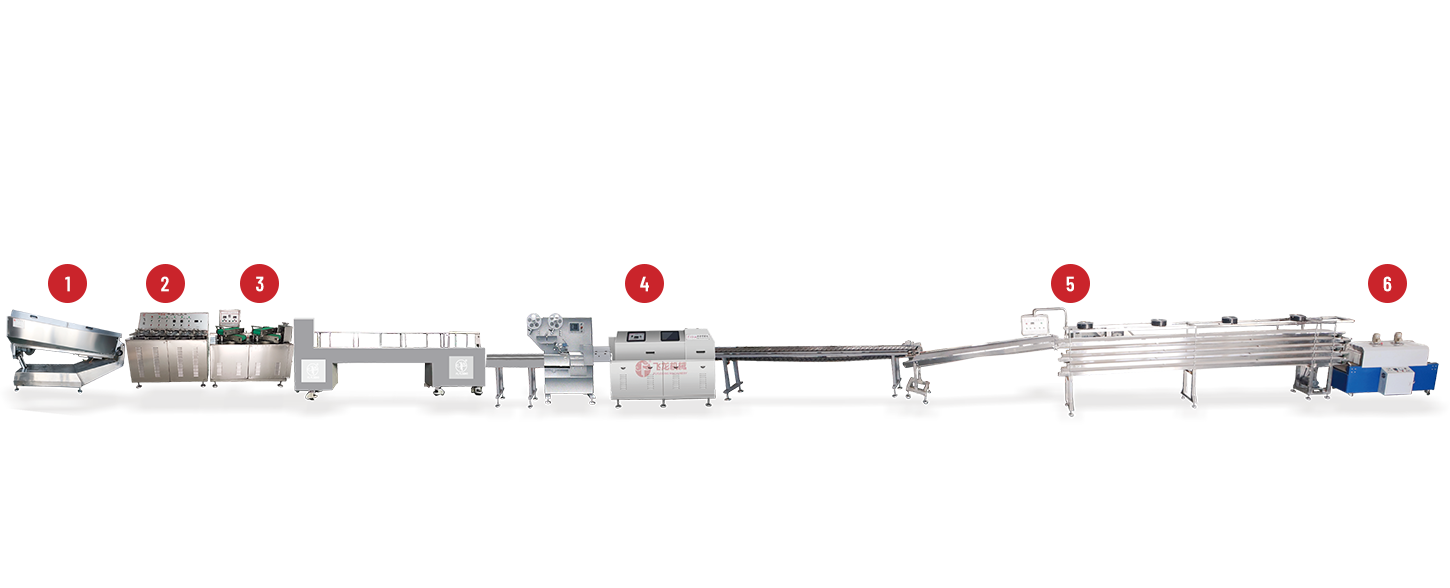
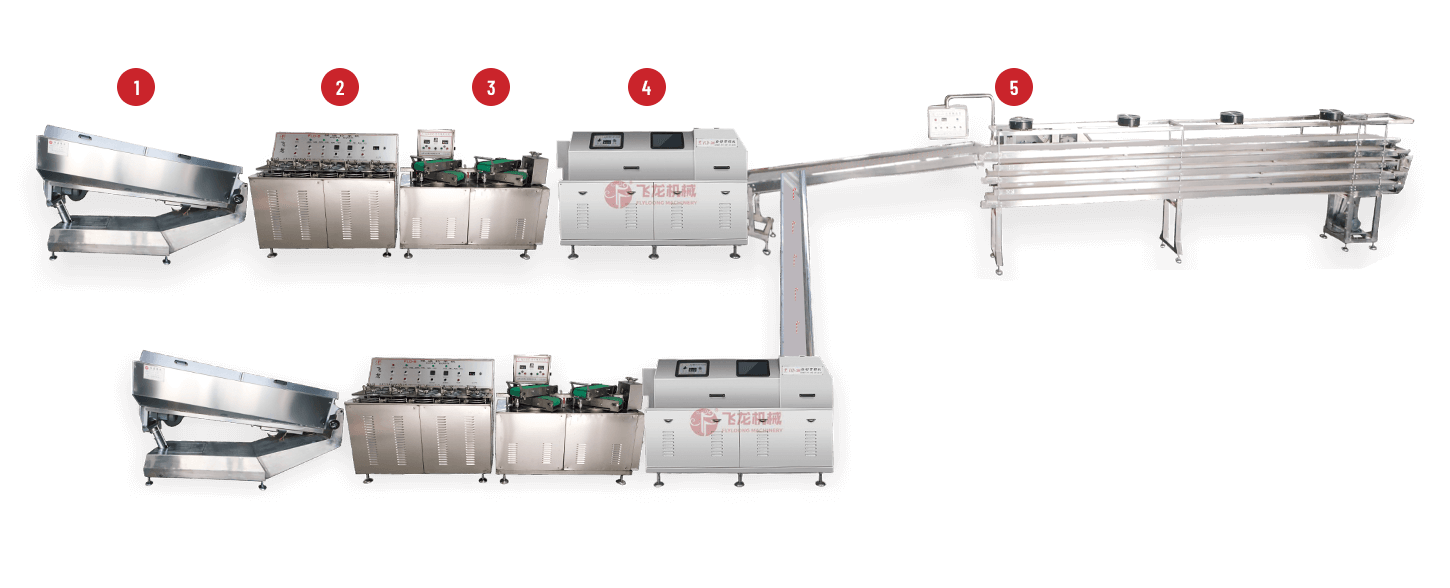

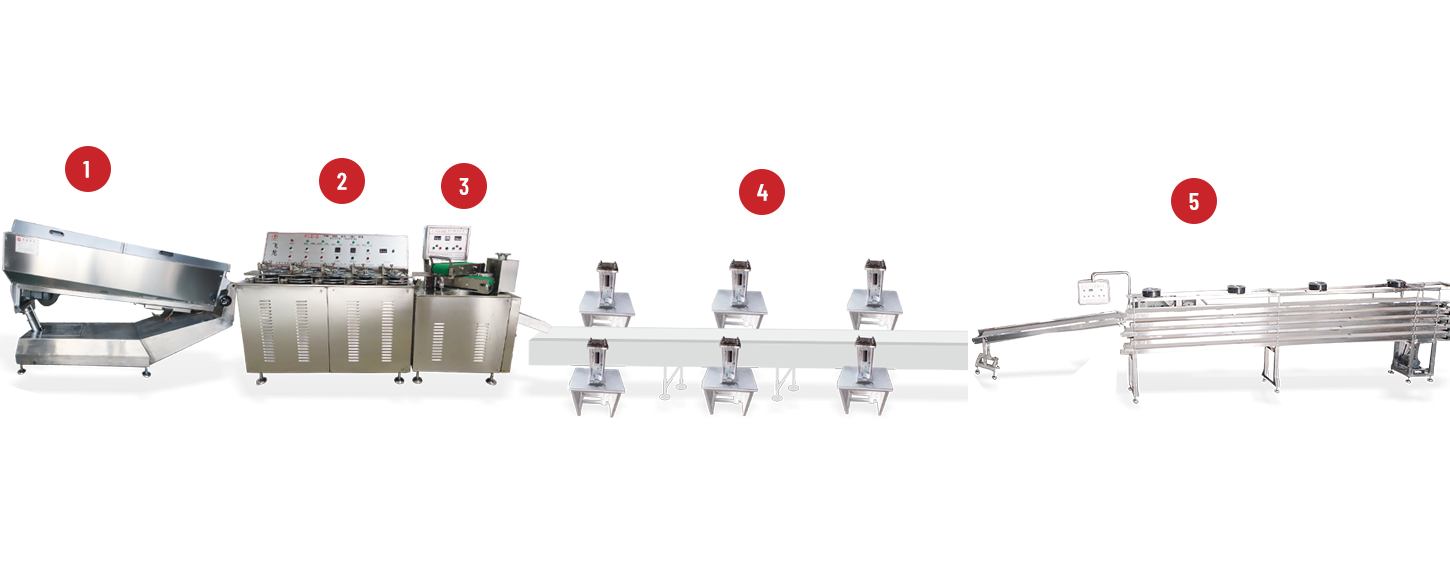
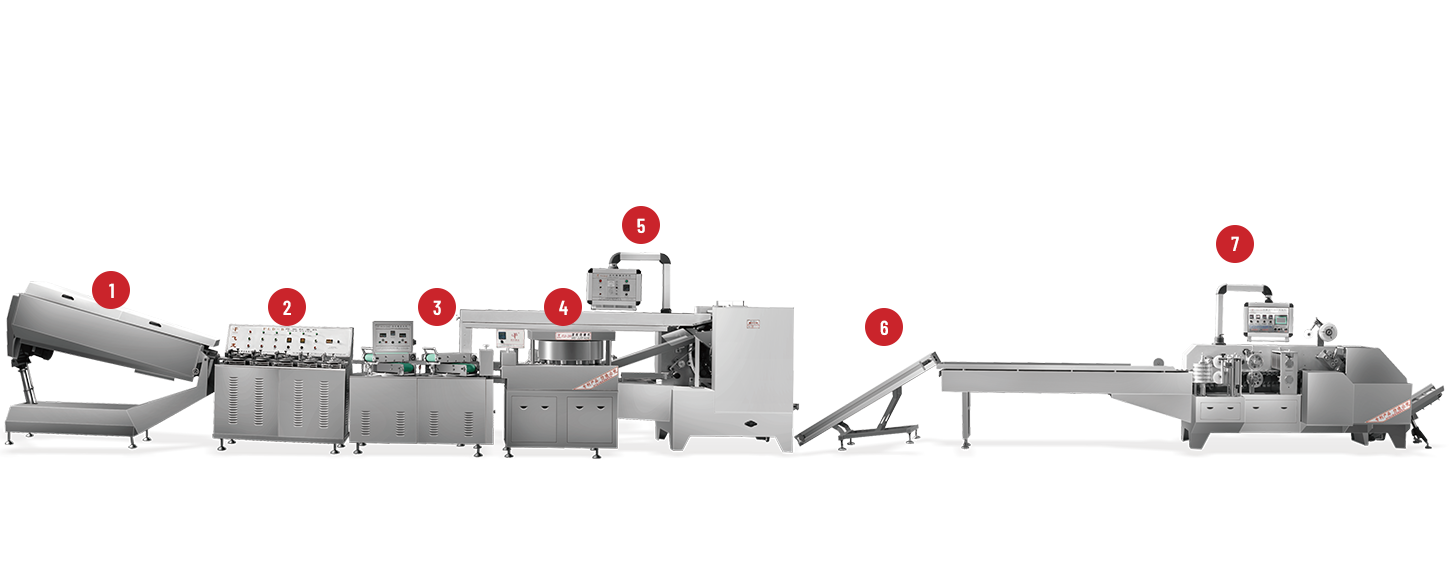
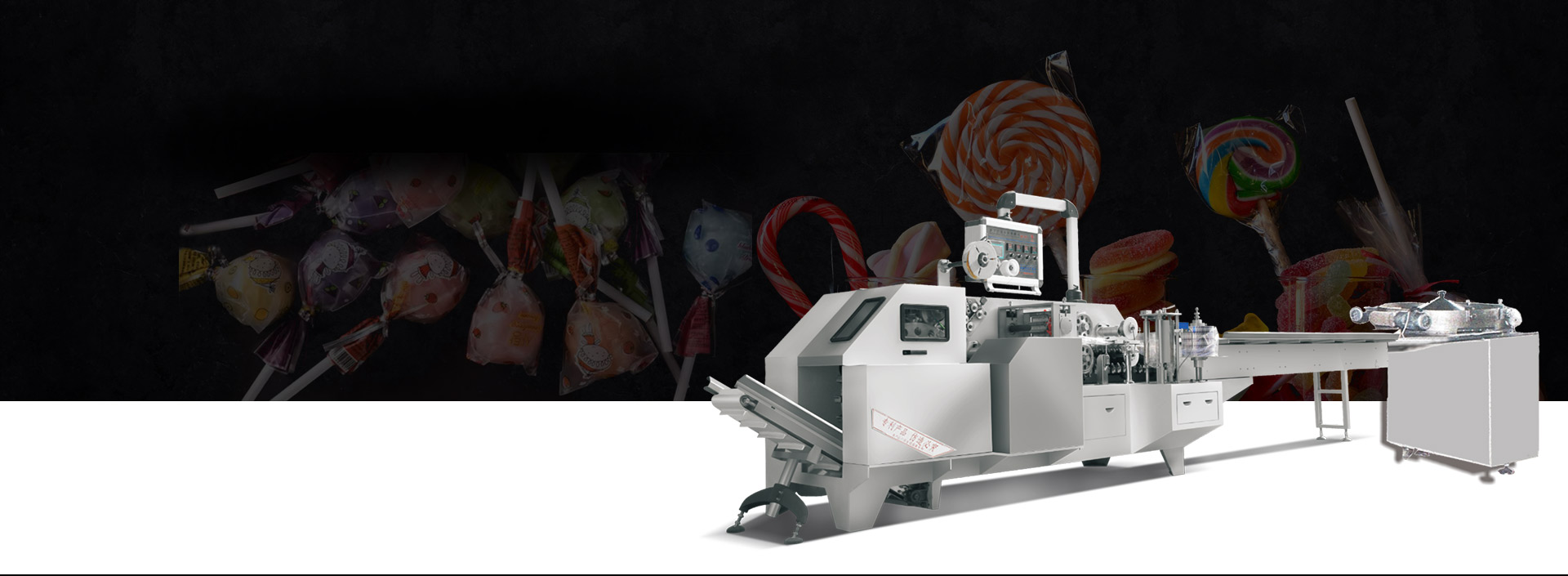
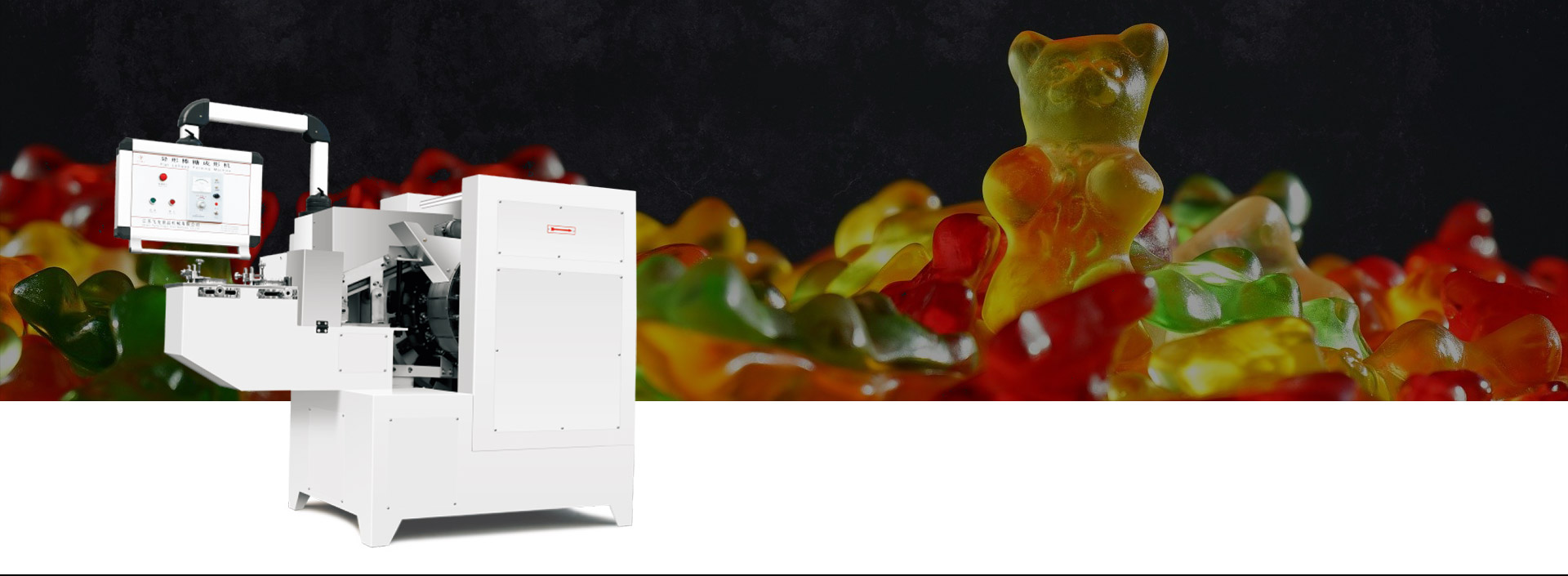
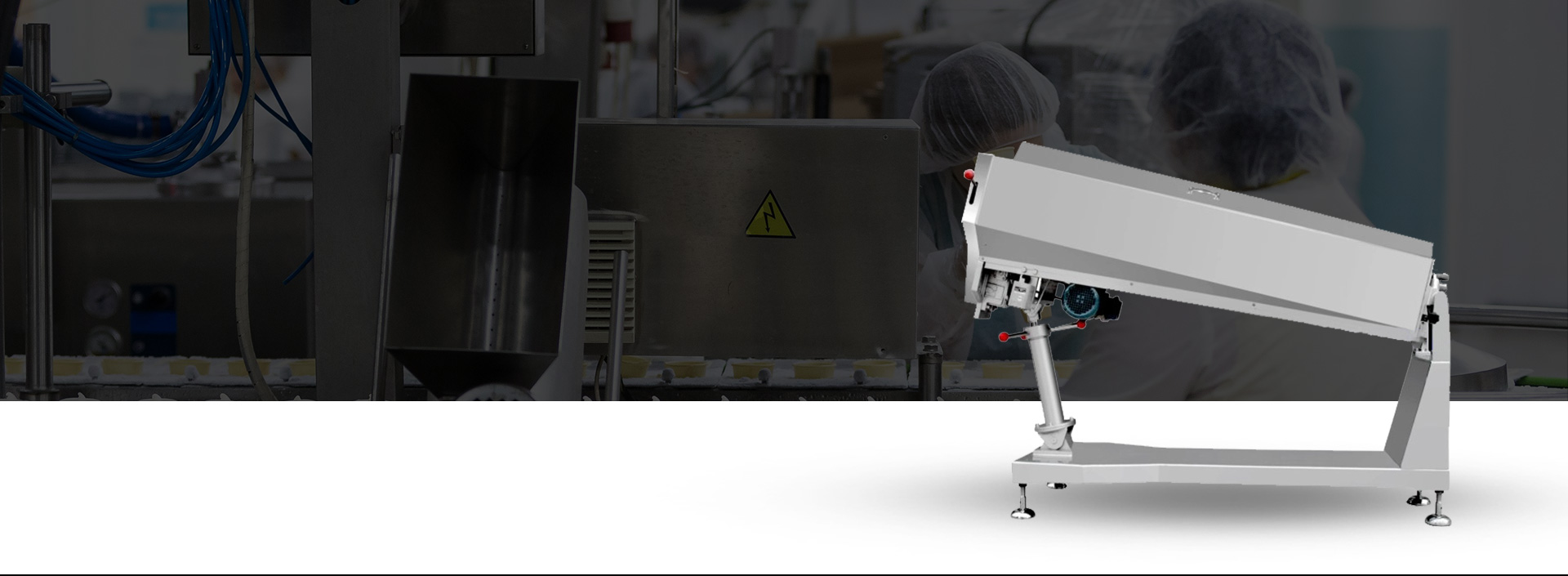
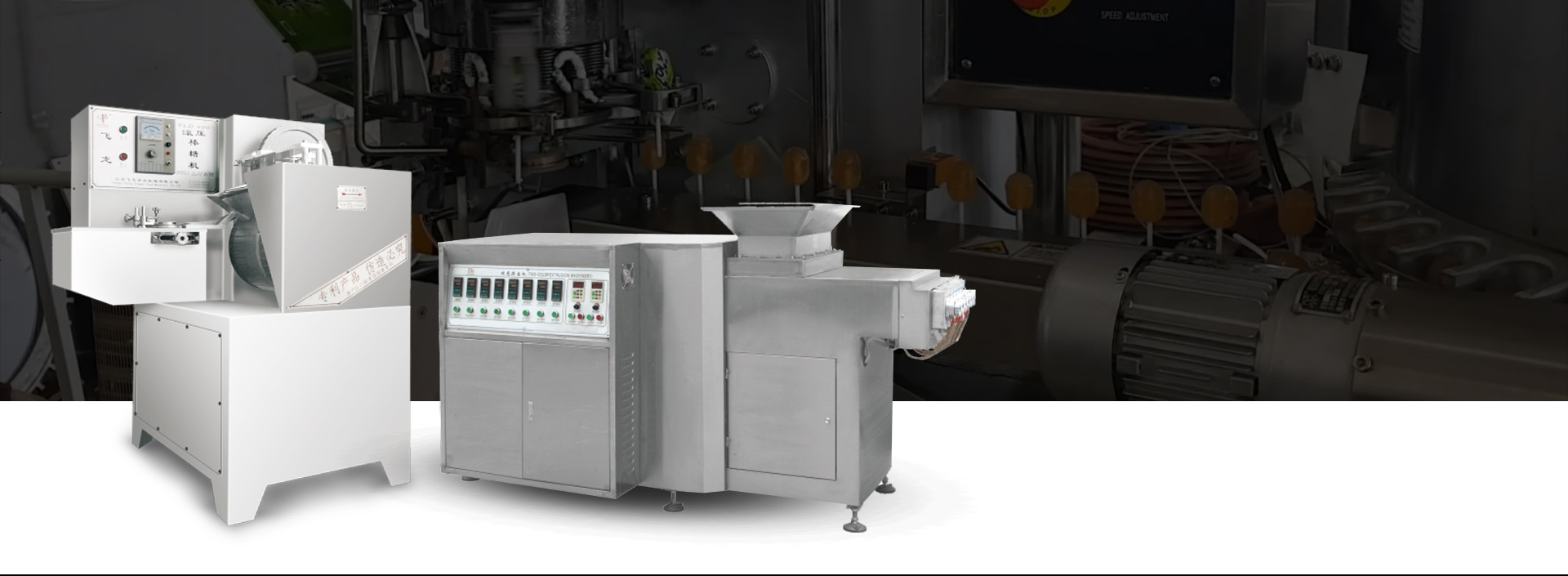
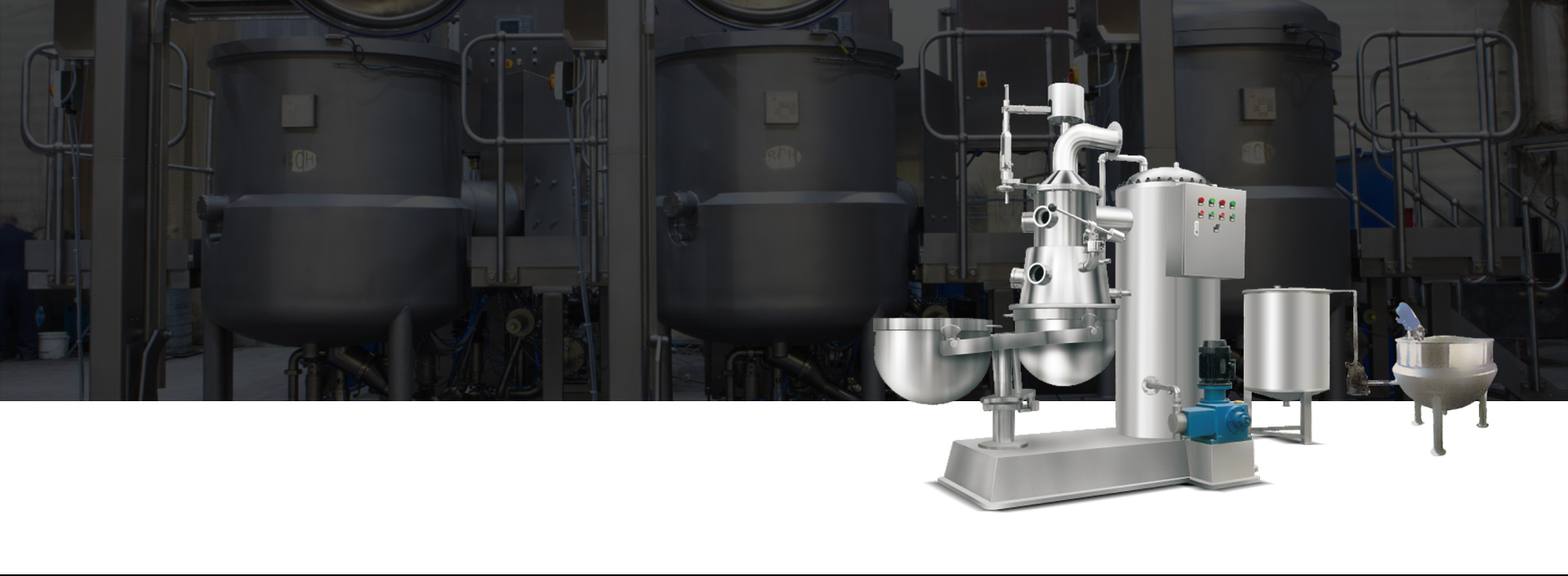

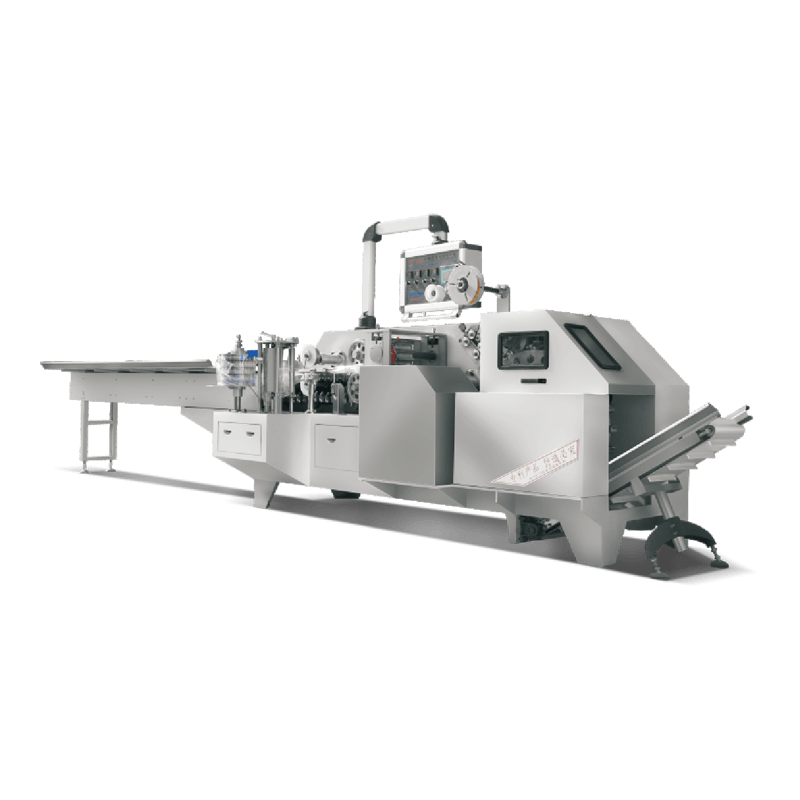
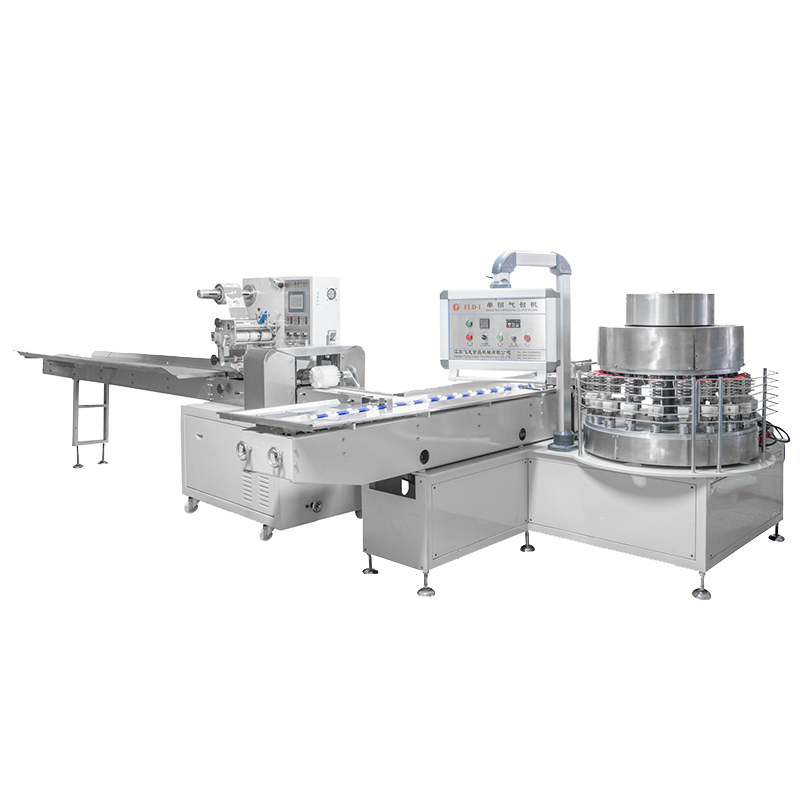
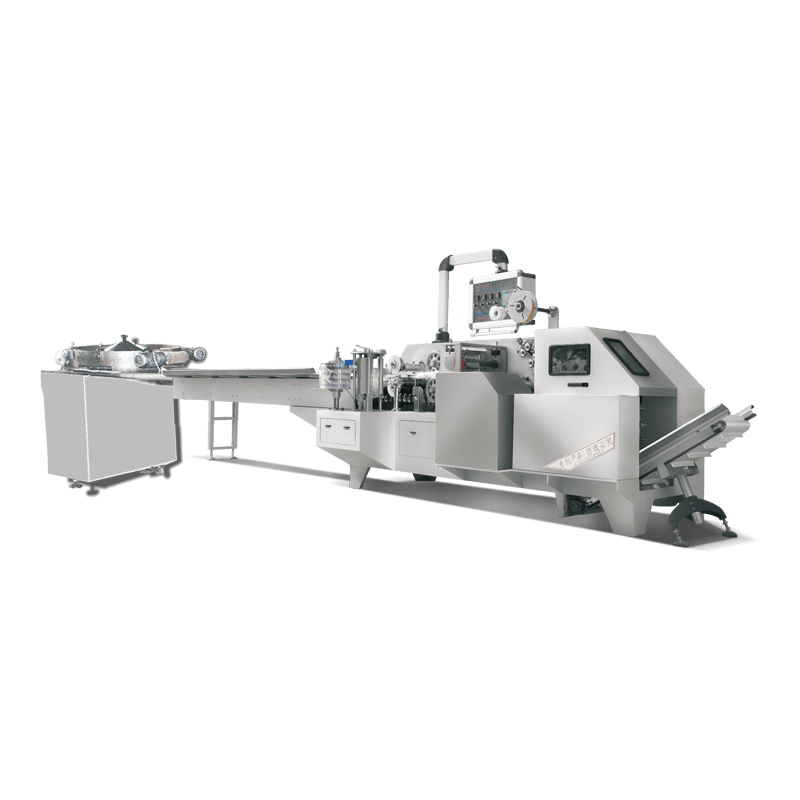
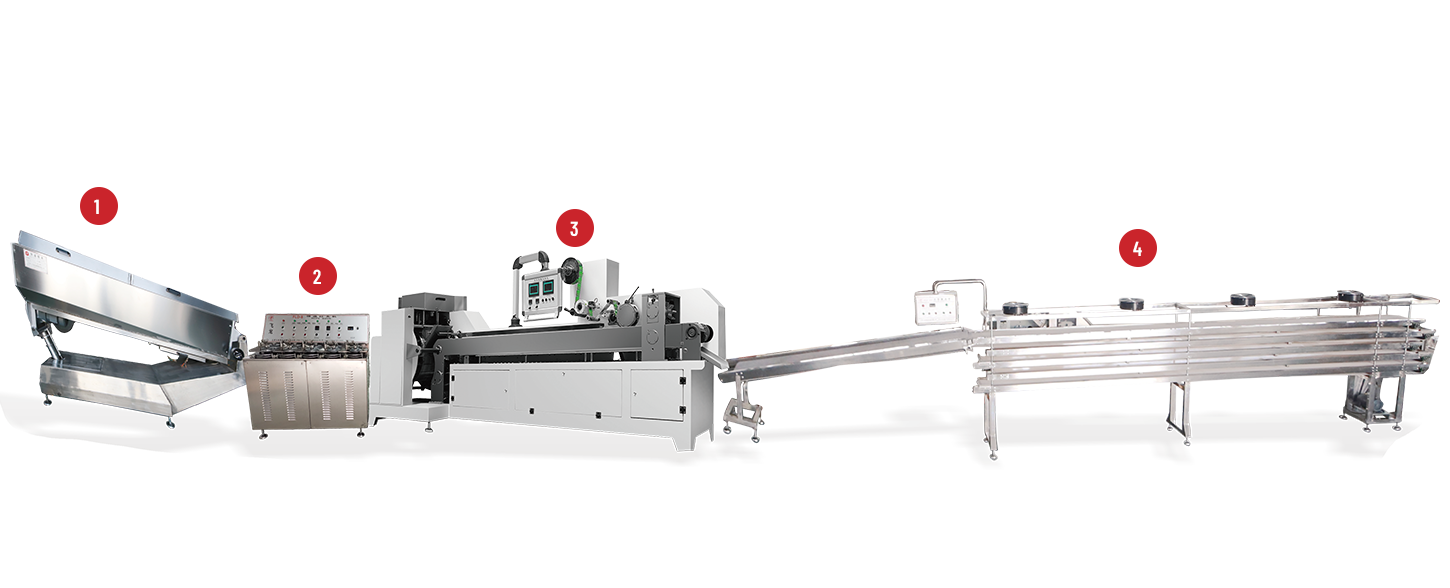
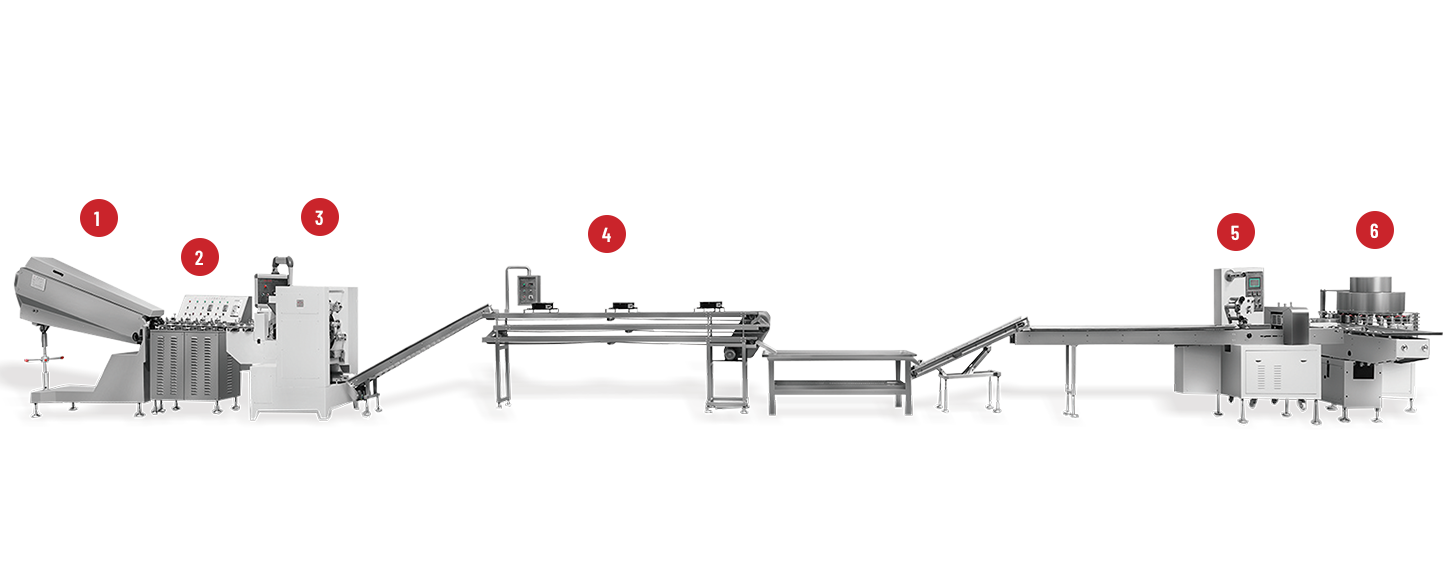
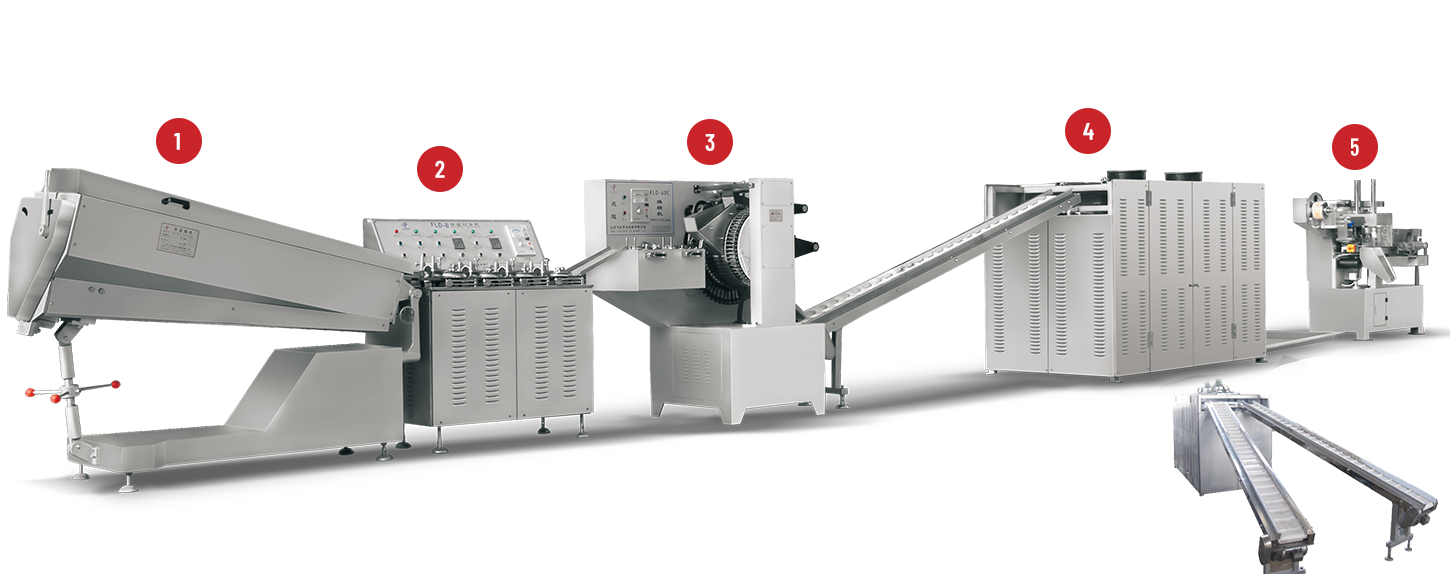
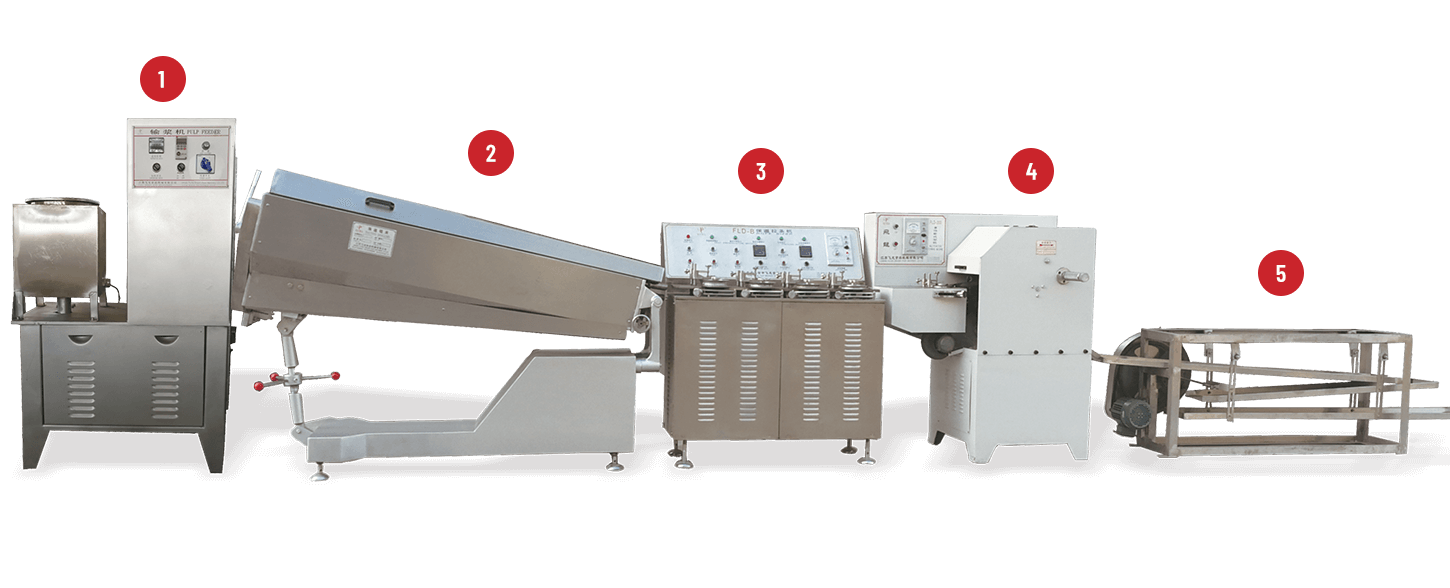
 +86-(0)515-8465666
+86-(0)515-8465666 +86-(0)515-85566996
+86-(0)515-85566996 +86-138 1559 9708
+86-138 1559 9708 flyloong@flyloongcn.com
flyloong@flyloongcn.com 
 Home
Home